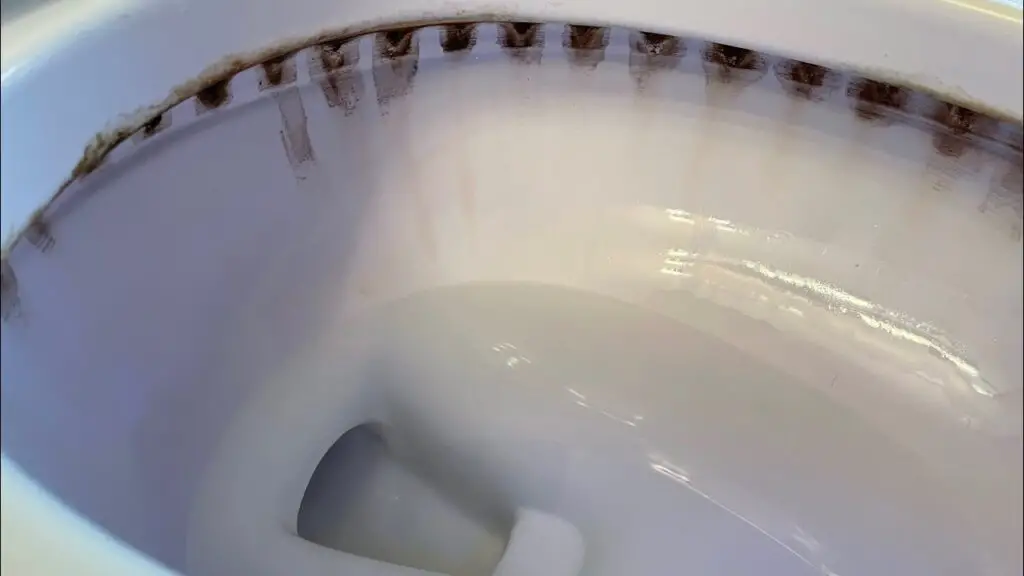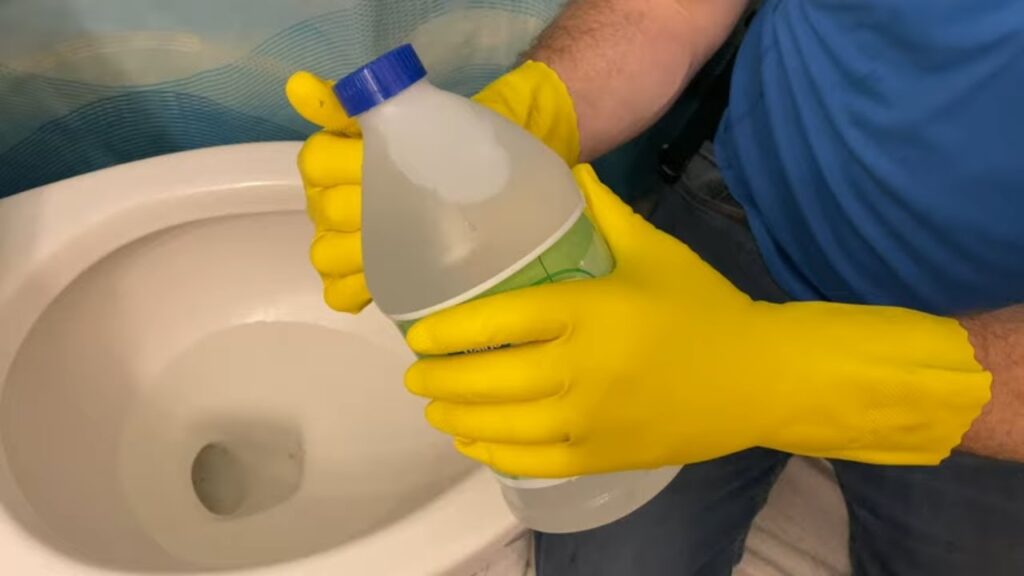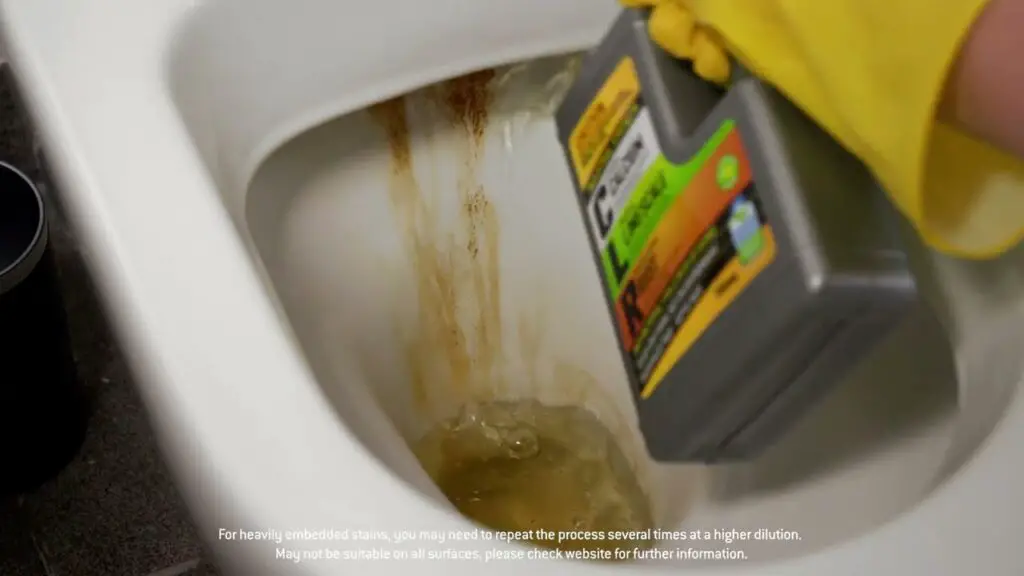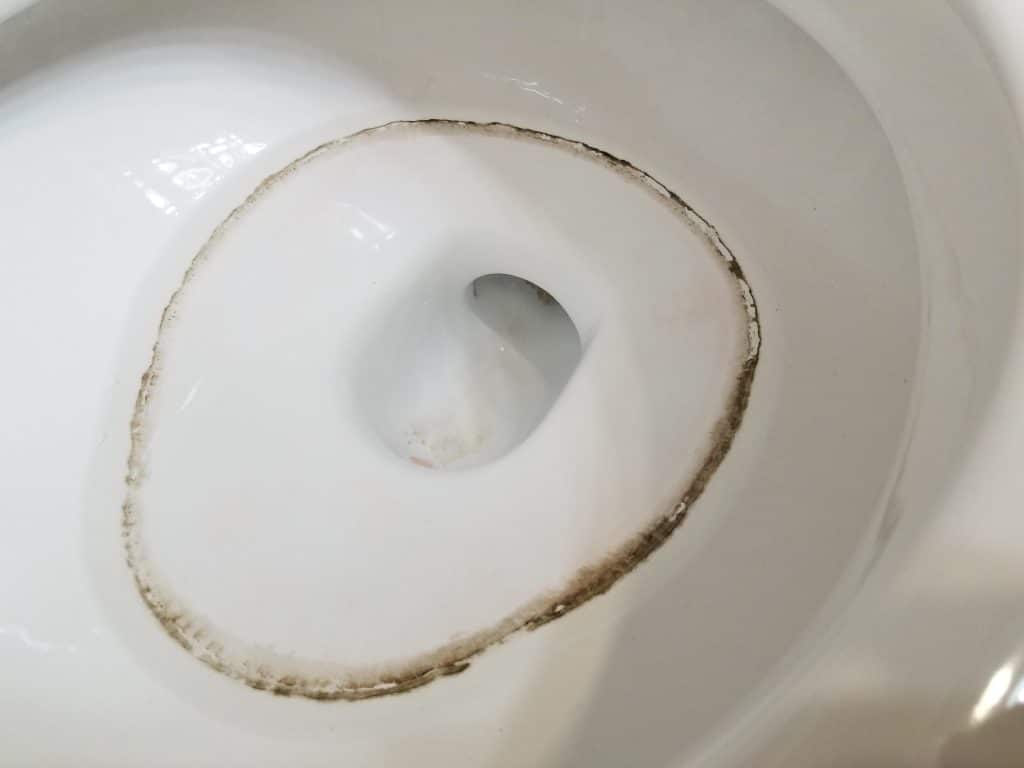Why Does Toilet Get Black Ring? A black ring in the toilet often results from mold or mildew growth. Hard water can also cause mineral buildups that contribute to this unsightly stain.
Toilets frequently develop black rings at the water line due to the persistent damp environment, which can encourage the growth of mold spores commonly present in the air. These rings may also be indicative of mineral deposits from hard water, particularly when water sits stagnant for periods of time.
In areas with high mineral content in the tap water, the accumulation of deposits such as iron, manganese, and calcium can be especially problematic, leading to stubborn rings that are difficult to remove without regular cleaning. Addressing the root of the problem, such as adjusting the water in the tank and routine toilet maintenance, is essential for preventing these black rings from forming. Regular cleaning with the appropriate products is crucial to maintain a hygienic and aesthetically pleasing toilet.

The Culprit Behind The Black Ring In Toilets
The Culprit Behind the Black Ring in Toilets often puzzles homeowners. It’s that unsightly, stubborn stain that forms just above the water line or under the rim, refusing to budge despite rigorous scrubbing. What exactly leads to the formation of this notorious black ring? By understanding the common causes and the impact of water quality, homeowners can take targeted action to prevent and eliminate these unwelcome marks.
Common Causes Of Toilet Bowl Stains
The black ring is not just a mark of dirt; it’s often a tale of mineral deposits and mold growth. Frequent culprits include:
- Mold – This thrives in moist, dark places.
- Mildew – Similar to mold, it forms in wet conditions.
- Iron and Magnesium – Minerals in water that leave hard-to-clean rings.
- Hard Water – Leads to limescale deposits.
The Role Of Water Quality In Staining
Water quality plays a significant role in the battle against toilet bowl rings. Hard water, which contains high levels of minerals like calcium or magnesium, can contribute to the layer of scum that often forms the base for the black stain. A table below illustrates the stain-contributing factors linked to water quality.
| Water Quality Factor | Impact on Toilet Bowl |
|---|---|
| Hard Water | Limescale and mineral buildup |
| Iron Rich Water | Rust-like stains |
| Magnesium & Calcium | Heavy stains that are hard to remove |
Proactive maintenance and regular cleaning with the right products can help minimize these stains. Softening your water or using a specialized cleaning agent designed for hard water can also make a significant difference in maintaining a clean bowl free from the black ring.
Mold And Mildew: Unseen Invaders
Discover the stealthy culprits behind the dreaded black ring in toilets – mold and mildew. These uninvited guests thrive in moist bathrooms, turning clean toilets into breeding grounds for unsightly marks and potential health risks. The battle against mold and mildew starts with understanding its nature and tactics.
Identifying Mold Growth
Mold in your toilet often starts as a simple black ring at the waterline. It can spread to other moist areas quickly. Look for these signs:
- Dark spots or streaks on grout.
- Velvety or fuzzy growth on walls.
- Musty odors, a telltale sign of lurking mold.
Regular checks help catch mold early, safeguarding your bathroom’s cleanliness.
Health Risks Associated With Bathroom Mold
Mold and mildew are not just unsightly; they pose real health concerns. Exposure can lead to symptoms such as:
| Allergy | Sneezing, runny nose, red eyes. |
|---|---|
| Lung Irritation | Coughing, wheezing. |
| Asthma | Flare-ups in people with asthma. |
Protect the air quality of your bathroom by addressing mold growth at the earliest.
Hard Water: A Stain Producer
Hard water contributes to unappealing stains in toilets, including that persistent black ring. The high mineral content in hard water can lead to these unsightly marks, requiring homeowners to understand and address the core issues to maintain a clean and stain-free toilet.
Understanding Mineral Deposits
Magnesium and calcium are minerals that cause hard water. These minerals form deposits, known as limescale, on surfaces. In toilets, these deposits often appear as a black ring at the water line. Limescale is tough to clean if not addressed early. Regular cleaning reduces mineral buildup.
Preventing Limescale Buildup
To prevent limescale and stains, reducing hard water is key. Water softeners can be installed to treat the entire home’s water system. For targeted toilet treatment, consider the following:
- Flush frequently: Regular flushing prevents mineral deposits from settling.
- Use cleaning agents: Cleaner tablets designed for hard water can help.
- Vinegar soaks: Vinegar naturally breaks down minerals. Pour vinegar into the toilet bowl and let it sit overnight before scrubbing.
- Stiff-bristled brush: Use this for scrubbing away early signs of limescale.
Regular maintenance and cleaning strategies assist in keeping toilets free from black rings due to hard water.

Keeping Clean: Maintenance Practices To Prevent Stains
Keeping Clean: Maintenance Practices to Prevent Stains reveals the secrets to a pristine toilet. A black ring in the toilet often indicates mold or mineral build-up. Staying ahead of the stains means less work, less often. Follow these simple routines and use the right products to keep the toilet spotless.
Regular Cleaning Routines
Consistency is key to a clean toilet. Don’t wait for stains to develop.
- Brush weekly: Use a toilet brush to scrub the bowl.
- Flush after scrubbing: This removes loosened grime.
- Clean the rim: Use a small brush for hard-to-reach areas.
- Maintain cleanliness: Wipe the exterior daily with disinfectant.
Choosing The Right Cleaning Products
Selecting the proper cleaners ensures effectiveness and safety. Harsh chemicals can harm your toilet.
| Product Type | Use for | Benefits |
|---|---|---|
| Baking Soda | Scrubbing the bowl | Gentle and non-toxic |
| Vinegar | Removing hard water stains | Natural disinfectant |
| Hydrogen Peroxide | Sanitizing the bowl | Alternative to bleach |
Always read labels and follow instructions. Wear gloves to protect your hands.
Professional Solutions And Home Remedies
Fighting the notorious black ring in toilets requires a mix of professional insight and effective home remedies. Whether you’re dealing with stubborn mineral deposits, mold growth, or bacterial build-up, the right approach can restore your toilet’s shine. Let’s dive into the options available, outlining when to seek professional help and how to tackle the issue yourself.
When To Call A Professional
Sometimes, a black ring is more than just an eyesore. It can signal deeper plumbing issues. Contact a professional if the following signs appear:
- Retry fails after multiple cleaning attempts
- Weird noises from the toilet or pipes
- Water levels fluctuate without cause
Professionals can address the underlying issues that home remedies cannot fix.
Diy Solutions To Remove Black Rings
Ready to roll up your sleeves? Here’s a list of do-it-yourself solutions to eliminate those unsightly black rings.
| Method | Instructions | Benefits |
|---|---|---|
| Baking Soda and Vinegar | Sprinkle baking soda, add vinegar, scrub after fizzing | Natural and non-toxic |
| Borax and Lemon Juice | Create paste, apply to ring, wait, scrub off | Powerful against stains |
| Pumice Stone | Gently scrub the wet ring area | Effective on hard water stains |
Always wear gloves and ventilate the area. Protect your toilet’s porcelain with gentle scrubbing.

Preventing Future Stains: Long-term Strategies
No one likes to see unsightly https://housecleanify.com/black-ring-toilet-bowl/black rings in their toilet bowl. The key to maintaining a clean bowl lies in preventing these stains before they occur. Long-term strategies help keep toilets spotless and hygienic. Let’s explore effective measures to protect your toilet from future black rings.
Water Softeners And Filtration Systems
Hard water contributes to toilet bowl stains. Minerals build up and leave rings. Water softeners reduce mineral content. Filtration systems remove impurities. Together, they maintain a cleaner bowl.
- Water softeners exchange hard minerals for softer ones.
- Filtration systems catch sediment and other particles.
By installing these systems, you create a strong defense against stain-causing agents.
Toilet Bowl Coatings And Sealants
Special coatings protect toilet bowls. These products seal the surface. They prevent waste and minerals from sticking. Apply a toilet bowl sealant as a barrier against stains.
| Coating Type | Benefits |
|---|---|
| Hydrophobic Coatings | Repel water and residues |
| Stain-resistant Sealants | Prevent mineral deposit build-up |
Regular reapplication ensures continuous protection. Follow the manufacturer’s instructions for the best results.
Frequently Asked Questions For Why Does Toilet Get Black Ring
How Do I Get Rid Of The Black Ring Around My Toilet?
To remove a black ring from your toilet, use a toilet bowl cleaner and a stiff-bristled brush. Apply the cleaner, scrub vigorously, then flush. For stubborn stains, try a pumice stone or a mixture of borax and vinegar. Always wear gloves for hygiene.
Why Does My Toilet Get A Ring So Fast?
Toilet rings form quickly due to hard water build-up, frequent use, and mildew growth. Regular cleaning and water softeners can prevent this.
How Do I Stop Black Stains In My Toilet?
Clean your toilet regularly with a mixture of vinegar and baking soda. Use a toilet brush to scrub the stains. For persistent black stains, apply a chlorine-based bleach, then flush after several minutes. Prevent future stains by using automatic bowl cleaners and maintaining a consistent cleaning schedule.
What Causes Black Mold Ring In Toilet Bowl?
A black mold ring in a toilet bowl often results from persistent moisture and a buildup of organic waste, facilitating mold growth.
Conclusion
Eliminating those persistent black rings in your toilet bowl doesn’t have to be daunting. Regular cleaning with the right products goes a long way in keeping your toilet pristine. Don’t let mineral deposits and mold compromise your bathroom’s hygiene. Tackle the problems at their source, and enjoy a cleaner, fresher space every day.

